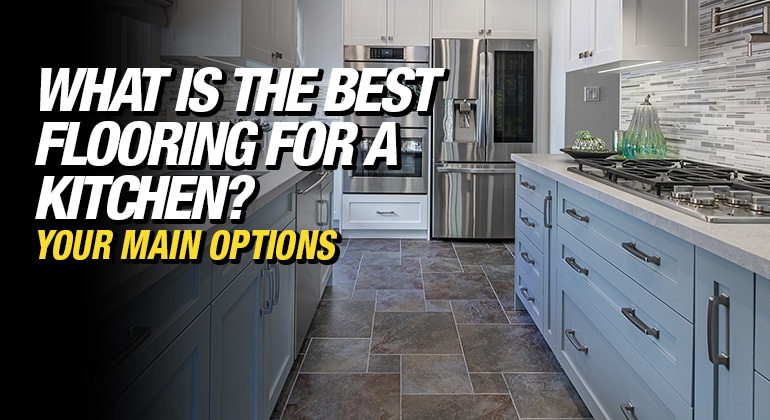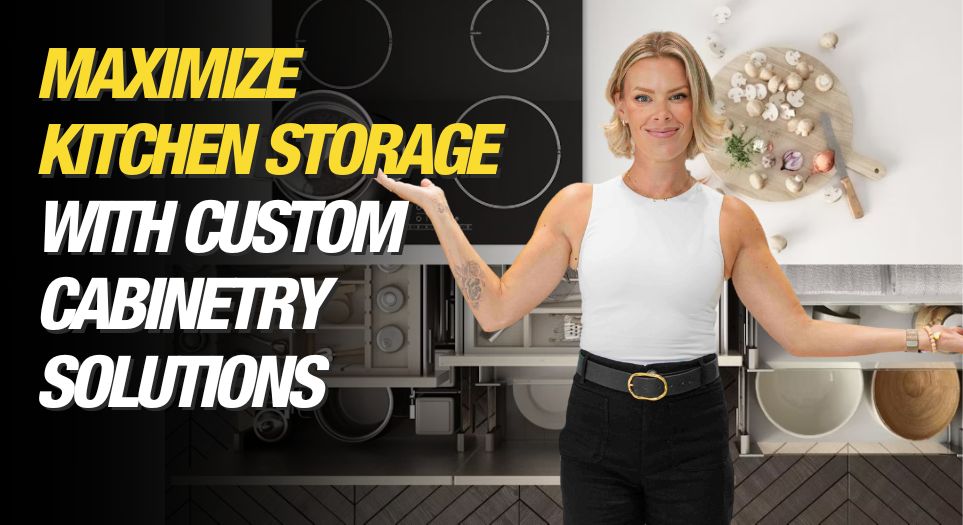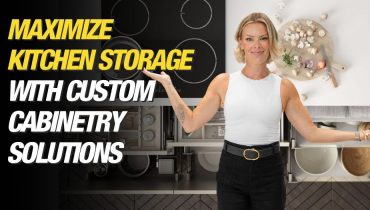I love my kitchen but it’s not large so it gets messy fast – add two growing young daughters, a husband and a cat – you have to stay organized....

What Is The Best Flooring For A Kitchen?
By Mike Holmes
Mike’s Advice / Design & Renovation Inspiration
Monday, November 8th, 2021 @ 1:48pm
Main Options for Kitchen Flooring
Let’s talk about options for kitchen floors. You must have seen all those fantastic-looking materials to choose from at your tile store or in magazines. However, you will very quickly realize that the kitchen flooring options vary in price, so you may want to consider putting different flooring materials in different areas. Perhaps tile in the working area and something warm and cozy in the hanging-out parts.
To guide you through the flooring options for your kitchen, here is a breakdown of the different materials available: wood flooring, natural stone flooring, and other alternatives such as vinyl flooring, laminate flooring, or concrete.
Wood Flooring for Kitchen: Hardwood, Engineered Hardwood, and Reclaimed Woods
There is a trend towards a single type of flooring throughout the house because of the popularity of open-concept spaces. Usually, I see the choice being wood.

Photo courtesy of Holmes Approved Homes Builder: Sosna Inc.
Is Wood Flooring Good for Kitchen Floors?
Well, wood is prone to moisture damage and can be marked and dented when you drop something. Wood flooring is inviting but you should think twice about using it on the kitchen floors where high traffic and water can damage the finish. This will lead to early failure.
On the plus side, hardwood flooring is somewhat flexible, so the subfloor doesn’t need to be perfectly stable, or level as compared to tile. I always do recommend starting with a level subfloor though!
Hardwood typically lasts longer than many other options and can be refinished and re-stained many times. Wood flooring can also be an eco-friendly option if you look for the seal of approval from FSC (Forestry Stewardship Council).
Here is another green option. Look into recycled flooring salvaged from old barns and warehouses that is remilled for home use.
RELATED
Natural Stone Flooring for Kitchen: Slate, Limestone, or Marble Tiles
Natural stone is often what I hear homeowners ask for. They are not a budget-friendly option though. Slate, limestone, and marble are popular choices, but they are also expensive and heavy.
Natural stone is porous and needs to be sealed every couple of years. Acidic liquids such as wine, lemon juice, and vinegar can do some damage.

Photo courtesy of Holmes Approved Homes Builder: Sosna Inc.
Other Types of Kitchen Flooring Materials
Concrete Flooring
If you like the industrial look, you may be considering concrete flooring. It’s not a practical choice for most renovations because it is very heavy. This is because of the minimal depth required to pour a solid concrete floor that won’t crack or crumble. Also, keep in mind the joist strength required to support this additional weight.
If you are building a new house, you could make the structure strong enough for concrete. It can be finished with a variety of stains or acid etchings that can make it look more interesting.
RELATED
Ceramic or Porcelain Kitchen Floor Tiles
These are some of the most popular kitchen flooring choices. Ceramic and porcelain tiles are my recommendation for kitchen floors. They are durable, attractive, easy to clean, and available in a large variety of patterns and finishes.
Ceramic tile is made of natural clay-based products, minerals, and water. Glazed ceramic tiles resist stains and are easy to clean. Depending on the color of the glaze, the color of the ceramic tile body may be visible if scratched. With proper installation, ceramic tiles are the IDEAL choice for a kitchen that has access to the outdoors. This is because tile can handle the moisture and dirt that is bound to come in.

Photo courtesy of Holmes Approved Homes Builder: Saldan Construction Group
Porcelain is harder than ceramic tile, and even more impervious to moisture. It’s made with color embedded throughout. Why does this matter? Because chips and cracks are almost invisible. Porcelain is generally more expensive than ceramic.
Tiles are a good flooring choice for your kitchen. Stone tile makes an extremely durable kitchen floor that holds up well to daily use, and it can be heated from below to provide comfort.
Mike’s Tip: Both ceramic and porcelain tiles need a strong and level subfloor to prevent cracks in the grout or loose tiles.
Vinyl Floor for Kitchen
Vinyl Flooring is one of the cheapest options on the market. It’s a good budget-friendly option. They are relatively durable, stain-resistant, and waterproof at an affordable price. Vinyl flooring is available in tiles and planks, as well as rolls.
You have lots of choices available. Everything from stone tiles to ceramic to porcelain to wood has been copied to make vinyl floors look as real as possible. And all this at a very low cost.

Photo courtesy of Holmes Approved Homes Builder: Rinaldi
Some manufacturers will tell you that new vinyl can be laid over an old vinyl or linoleum floor. I always recommend taking out the existing floor to have a look at the condition of the underlay. Also, keep in mind that some older floors may have asbestos in them.
Some vinyl flooring (like peel-and-stick) comes with its own adhesive. Some are “click” floors that snap together and float without adhesive.
Here are the cons of vinyl flooring, and the reason I don’t install vinyl flooring in kitchens. The mastics are prone to mold, and the manufacturing process is not environmentally friendly.
Vinyl flooring is also not damaged resistant. Drop a couple of sharp objects on the floor and you will likely see dents. They CAN be durable, depending on the grade.
Vinyl Floor and Indoor Air Quality
Vinyl is basically made from PVC. That’s why it is suspected of causing some health issues. When installing the floor, be aware that you will be living with fumes for a period of time.
Laminate Floor for Kitchen
Laminate flooring can look like a wide variety of materials (with awesome accuracy). You can have the look of hardwood, stone tiles, or ceramic tile for a lower cost and less maintenance. Laminate floors are made of an inner core of pressed and glued wood material. A photographic image is laminated on the surface.
Laminate flooring is extremely impact- and scratch-resistant. However, they CAN be scratched and damaged by prolonged exposure to moisture.
Laminate flooring may not be the best choice for your kitchen floor. Your warranty for the product may be void if used in wet areas (kitchens and bathrooms). Water is laminate flooring’s worst enemy. At some point, water will find its way to the core. The top is sealed with the wear layer and the bottom is coated. However, the laminate floorboard’s edges are raw and can soak up water.
As you know, I always discuss options with the pros I bring in. My flooring supplier Unique Flooring GTA installed a vinyl floor from the Twelve Oaks from their Sure Wood Collection. This product is 100% waterproof, with a built-in antimicrobial cork underlayment that offers superior comfort and dampens sound. It has a patented 5G locking system. Super easy to install and will not gap under normal usage.
Bamboo Flooring
Bamboo is becoming a popular choice for its eco-friendliness, being a type of grass that is a fast-growing, renewable resource. In the manufacturing process, bamboo is steamed under pressure and/pr boiled. This removes the natural sugars and impurities.
The bamboo is then kiln-dried and milled. Finally, the strips are joined together with glue, heat, and pressure.
The result is a hard and rigid product. Like wood, bamboo is prone to moisture damage and may not be an ideal choice for kitchens. A lot depends on the sealant. If you are going with bamboo flooring for your kitchen, pick high-grade bamboo. It installs much like hardwood.
Tips for Kitchen Renovation
Don’t Forget About the Subfloor
It may not be obvious, but the MOST IMPORTANT thing about your kitchen floor is what’s underneath. I am talking about the subfloor. Is the subfloor as strong as it needs to be for the material you want to put on top of it?
Think About Your Lighting
Don’t just go with one big light in the middle of the room, which a lot of people tend to do. Think about function and mood. Where will you need the bright lights? Over the work areas such as your stove, sink, etc.
You can put softer lights under the cabinets. You can even have everything on a dimmer so you can create a specific mood.

Kitchen renovation completed for Holmes on Homes: Building a Legacy
Ventilation Needs
Kitchens are very damp environments. Think about the moisture from your cooking, steam from the dishwasher, and sinks full of water. You need to make sure that moisture is escaping.
During a major kitchen reno, I recommend checking to see if your fan is still up to the job. You really need a good exhaust to pull moisture out of the kitchen, especially if you are boiling pasta for a large family.
RELATED
Here is a full article on kitchen and bathroom ventilation needs
Electrical Work
When it comes to electricity, your kitchen is probably the most demanding room in your home.
Plan where you want your outlets to go. Think about where you will be using your blenders and coffee machine. In some areas, homeowners ARE allowed to do their own electrical. I always recommend bringing in a licensed electrical contractor for your electrical work. It’s about your family’s safety.
RELATED
Choosing a Kitchen Sink
Consider your kitchen habits before choosing single vs. double basins. Undermount sinks make cleanup easy because it eliminates the mounting rim that sits on top of your counter. If you are looking for an easy option to replace your existing kitchen sink, a drop-in or top-mount sink is perfect for you.
Hiring a Kitchen Designer
It’s no secret that I am a big believer in bringing in the right pros. In a complete kitchen remodel, you will be making significant design choices. To me, it makes sense to work with someone who has been through the process several times.
Hiring a designer doesn’t mean you are handing over the entire process to them. A designer should work WITH you. They will know the principles of kitchen design and come up with layout options for you.
Kitchen Layout Tips
In a U-shaped kitchen, don’t locate two workstations directly opposite one another. You want to avoid two people working back to back with each other.
Make sure all your appliances and doors can fully open, without blocking anything or bumping into cupboards. I have seen a lot of people order appliances online without proper measurements.
Be Honest About Maintenance
Be honest with yourself about maintenance. Some products require regular maintenance if they are going to last a long time. Some countertop materials need to be sealed a couple of times a year. This may sound like a lot but skipping this will lead to stains or other signs of wear showing.
Be realistic with yourself about the maintenance needed for these premium products, If you are not likely to keep on top of it, choose lower-maintenance materials.
READ NEXT
Top 10 Kitchen Remodel Problems and Solutions
25 Awesome Kitchen Backsplash Ideas
15 Easy Ways to Update Your Kitchen…
25 Awesome Kitchen Backsplash Ideas











